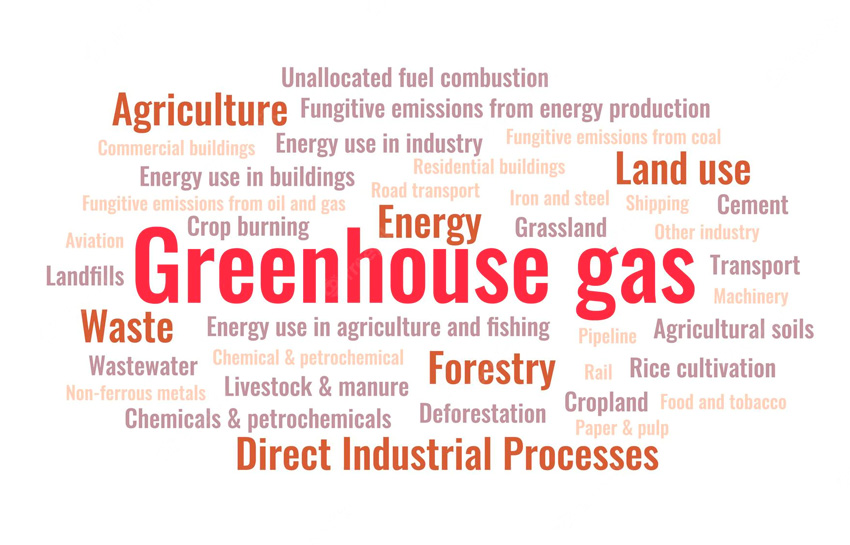
How Secretive Methane Emissions Are Driving Climate Change
Studies reveal that methane emissions from human actions, including agricultural and oil and gas industries, drive over 25% of today's global warming. Methane is a potent greenhouse gas with 80 times the warming power of carbon dioxide in the first 20 years; once it reaches the atmosphere. Since it can trap heat efficiently in the atmosphere, methane contributes to climate change that impacts the world today.
A recent UNEP report reveals several secretive methane emissions in the oil and gas industry feeding the climate crisis. These emissions, typically known as "super emitter events," threaten to undermine international efforts to halt global warming at 1.5 degrees Celsius. This blog looks at the secretive methane emissions sources and how it is contributing to climate change.
Super-Emitter Events in the Oil and Gas Industry
Methane emits from several human-influenced and natural sources. Human-influenced sources include oil and natural gas systems, landfills, agricultural activities, coal mining, wastewater treatments, and some industrial processes. However, while there are well-known sources of methane, there are also several other furtive discharges that the public may never know about.
The UNEP report reveals massive methane leaks, commonly known as super-emitter events, have been taking place secretly at various oil and gas fields worldwide. These emissions relate to equipment failures and intentional releases. In 2015, a storage facility in Los Angeles released over 10,000 tons of methane into the atmosphere over four months. In June 2022, researchers at Spain's Polytechnic University of Valencia discovered the latest super-emitter event at a Gulf of Mexico oil and gas platform. The platform discharged a massive 40,000 tonnes of methane over a 17-day period in December 2021. Experts believe there could be hundreds of similar sources in various locations that go undetected.
How Digital Tools Help Track Super-Emitter Events
One of the biggest challenges in the fight against methane emissions is knowing exactly how much methane is emitting, where it is emitting, and for how long it is emitting. Today, government entities and players in the oil and gas industry are turning to methane quantification technologies and digital tools to track sources of furtive methane emissions. These technologies include the following:
Drones Used to Map Methane Emissions
Government environmental entities, nongovernmental bodies, and oil and gas companies are leveraging a sensitive drone-based system for mapping methane hotspots. They are finding leaks from gas systems, and calculating the total methane discharges from anthropogenic environments, such as agriculture biogas plants, energy production, and wastewater treatment plants. This technology allows all measurements to take place on board the drone with zero requirements for additional ground-based tools. Ideally, researchers use horizontal drone flights to map and find emissions sources covering extensive areas. They use the vertical flight patterns to calculate the total methane fluxes.
Sensor-Equipped Aircraft
Sensor-equipped aircraft can find and estimate emissions from individual facilities. Traditional aircraft with sensors can spot high emitters over a wide spatial area. These aircraft efficiently conduct regular and consistent surveys of facilities and equipment for emissions detection, localization, and quantification in the oil and gas industry. These technologies eliminate human risk.
Satellites
Modern satellite systems can help find major areas of methane emissions. Specifically, the TROPOspheric Monitoring Instrument (TROPOMI) onboard the satellites effectively detects methane emissions. The instrument features spatial resolution covering 50 square kilometers (about twice the area of Chicago O'Hare airport) and leverages near-infrared and shortwave infrared spectral bands to detect methane emissions in disparate areas.
Aegex Technologies Offers Digital Tools for Methane Detection and Measurements
A holistic adoption of digital tools like those provided by Aegex Technologies can help the oil and gas industry detect and manage furtive methane gas emissions in secretive places and hazardous locations. These tools feature systems and innovative technologies, including IoT (Internet of Things), artificial intelligence, and smart sensors. They detect potential methane emissions ahead of time or actual methane leak events in potential sources, including poorly maintained gas equipment and abandoned wells.
Specifically, the Aegex's NexVu IoT solution tracks and detects leaks and aids in predictive maintenance. It features smart sensors, endpoints, and radios to provide accurate methane detection, measurement, and monitoring. Aegex also offers an Intrinsically Safe Tablet with a Windows 10 platform and data-driven predictive maintenance technologies to find potential leaks in oil and gas systems and parts for timely intervention measures. Contact us today to learn more.
